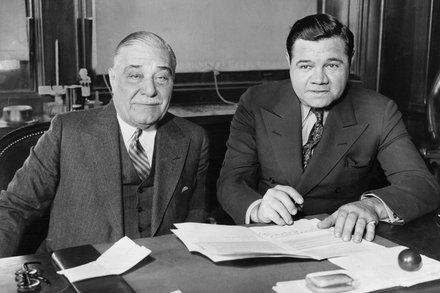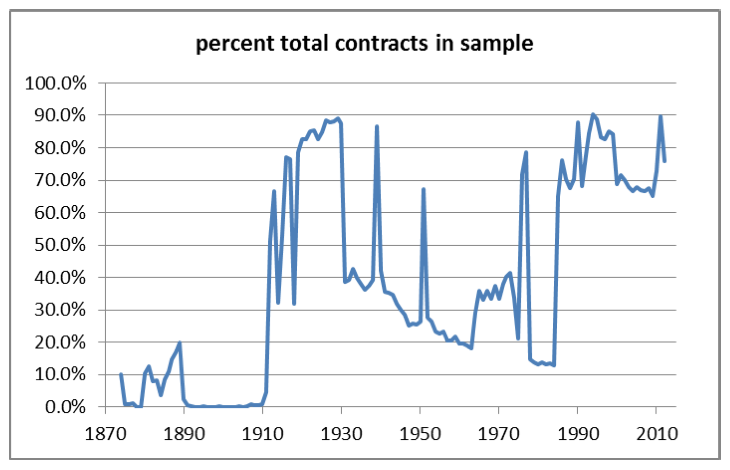What Babe Ruth’s Salary Would Look Like Today

Earlier this week, the great Craig Edwards published a look at the inflation in baseball players’ salaries that showed how disproportionately large Alex Rodriguez’s 2001 contract was relative to the other largest contracts in MLB history. The piece lacked a needed historical context that is all too often skipped when considering salaries but is not skipped when considering on-field performance.
We are quick to compare Alex Rodriguez’s home run totals against the greatest players from every era, but in evaluating the contract, Craig limited the comparative salary analysis to just those who earned a $100M deal. That unfairly excludes baseball history, a thing rarely done.
We are all mostly familiar with adjusting for inflation, but Edwards’ good point was that we shouldn’t just adjust for societal inflation, but rather against one’s peers. We shouldn’t compare baseball salaries against teacher salaries. When isolating baseball salaries, Craig showed that there has been tremendous growth (on the order of 5% compounding annually) in the last ~20 years.

I think we can extend that line back to the

Unfortunately, the

We’re going to have to do a bit of extrapolation to get back to Babe Ruth’s days. Here’s that same chart, but with an added data point for 2018 salary and a trendline.

So we adjust. We know that the average American household was making about $5,900 in 1967. We also know that the average MLB player was making about 3.1x that amount. The other thing that we know, thanks to Michael Haupert’s research, is that Ross Barnes, the highest paid MLB player in 1874, was earning 2.3 times what the average American earned. While we are talking max vs average here, the difference between 2.3 and 3.1 isn’t that much. It’s all context anyway. So we apply the inflation rate between 1917 and 1967 (1.94%) to the known average salary in 1967 to walk back to 1917. (I also changed the Y-axis here to a logarithmic scale so that you could see what was going on.)

To this point, I have basically set up a model to show how baseball salaries have grown. You’re probably more interested in the point in the subject line, but we’ll get there later because Michael Haupert just emailed me the relevant portion of his research (the average MLB salary going back to 1874).

Wow. My estimate was shockingly accurate. Haupert’s database shows the dip in salary in the World War II years and the rebound after that appeared to then steadily grow. The other thing to note about Haupert’s database is that it only contains a portion of the total MLB salaries at the time. By definition, these salaries were likely the more high-profile salaries. I think it’s fair to say that Haupert’s database may be overestimating the average due to this reporting bias, which makes my estimate even more on the high side.
Tackling the question in the title line becomes interesting in this context. What does Babe Ruth’s salary look like today in the world where Pablo Sandoval earned a $100M contract? In 1922, Babe Ruth became the highest paid MLB player, a title he would not relinquish until he retired after the 1934 season. Taken together, in those 12 years with the Yankees, Ruth earned something like $792,000, for an average annual value of $60,923.
Based on my model, the average MLB salary in 1922 was something like $8,000. It has since grown something like 50,000% (49,558%, but who’s counting?). If taken as a single “contract” with the Yankees in 1922, Babe Ruth’s “contract” would have been worth $392,495,604 if handed out this year. That actually feels pretty light for a 26-year-old who had just more than doubled the
Based on Haupert’s database, which contains over 400 salaries for 1922, the average MLB salary in 1922 was $4,957. Based on this and his modern salary figures, the average MLB salary has grown 91,038% since then. Applying the same analysis, Babe Ruth’s “Contract” was worth something like $721M.
Here’s a look at where that fits in with Craig’s analysis from earlier this week:

While maybe the biggest contract ever signed, that
Each of those AAV figures for the known 1927 Babe Ruth contract is still short of the Alex Rodriguez contract, thus making the A-Rod 2001 contract still the highest in terms of AAV in MLB history. But there is at least some debate in the largest overall contract in MLB history.
So while we should continue to marvel at the extraordinary contracts that have will be handed out in recent years, let’s not forget that this is what baseball has always done.
-Sean Morash
















